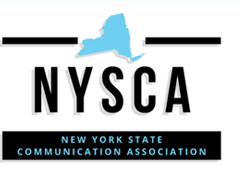75th Proceedings of the New York State Communication Association
Introduction
From Plato to Pixels: Honoring the Past. Celebrating the Present. Shaping the Future.
Villa Roma Resort & Conference Center Callicoon, NY
October 13-15, 2017
To mark 75 years of the New York State Communication Association, the Proceedings is proud to bring readers not only some of the top teaching strategies and research from this year’s conference, but selected submissions from conferences past. This digital publication is a relatively young part of NYSCA’s history, meaning that so much of the excellent work presented by our members in the last couple of decades could not benefit from the reach and readership of an online journal. Our way of honoring NYSCA’s history is to bring some of that innovative scholarship to present and future communication professionals so that such work can continue to engage the critical questions of our discipline.
Thus, the second half of this proceedings is dedicated to a “retrospective” from past conference presentations. In a research paper from 2013, Evelyn Plummer applies general systems theory to the dual concerns of Self and Other in conflict management. Her argument establishes collaboration as the essential mechanism in successful conflict resolution. Monica Brasted’s paper from 2003 examines children’s advertising and the factors most likely to influence children’s responses, especially to portrayals of gender in television commercials. She shows that representations of gender by and large remain stereotypical, with consistent effects on how children perceive gender and the gender appropriateness of toys. Molly Shilo’s essay, which won the Top Student Paper Award in 2015, pairs nicely with Brasted’s work in its review of the literature on the broader topic of children’s television consumption and development of gender stereotypes. Shilo argues that despite advocacy, regulation, and some progress, traditional gender stereotypes remain pervasive. Finally, we return to Plummer, a regular contributor to our Great Ideas for Teaching Students sessions. In this 2015 activity, “Nonverbal Mashups,” students role play communication scenarios made up by their peers to explore lean vs rich media contexts and the degree to which communicators can successfully convey nonverbal messages within each context.
Does some of this research need updating? Yes. In many ways, that is the point. These papers are insightful for what they tell us about the constancy and consistency in media effects as well as the openings they create for pursuing meaningful change in our mediated world. They are invitations to run with all they ways their research needs to be revisited. They are invitations to keep at critical questions about human relationships—with each other and with our technologies.
They are invitations to carry on from Plato and pixels to shape our communication world of the future, in the next 75 years of NYSCA.
Conference Papers
Honoring the Past: What Remains Relevant?
Susan Drucker, Suzanne N. Berman, Mario Gonzalez, Jingsi Wu, Joe Peyronnin, and Mary L. Kahl
Publicly Private: Disclosing Grief on Facebook*
Elizabeth R. Dobson
Humans Gone Wild: Analysis of Zoo Controversy Regarding Online Communication and Public Agenda
April Rink
In A Network, All Concerns Are Your Concerns: Applying The “Dual Concerns” Conflict Management Model To Communication Networks
Evelyn Plummer
The Language of Political Genres: Inaugural and State Speeches of New York City Mayors and US Presidents
David C. Hoffman, Tiffany Lewis, and Don Waisanen
Will Women Return Home? Changing Gender Dynamics in Urban China under the Two-Child Policy
Fengmei Li
Putting the Social in Social Media: How Human Connection Triggers Engagement
Stephanie Adomavicius
Great Ideas for Teaching Students (GIFTS)
Music? Yes, MUSIC!
Evelyn Plummer

